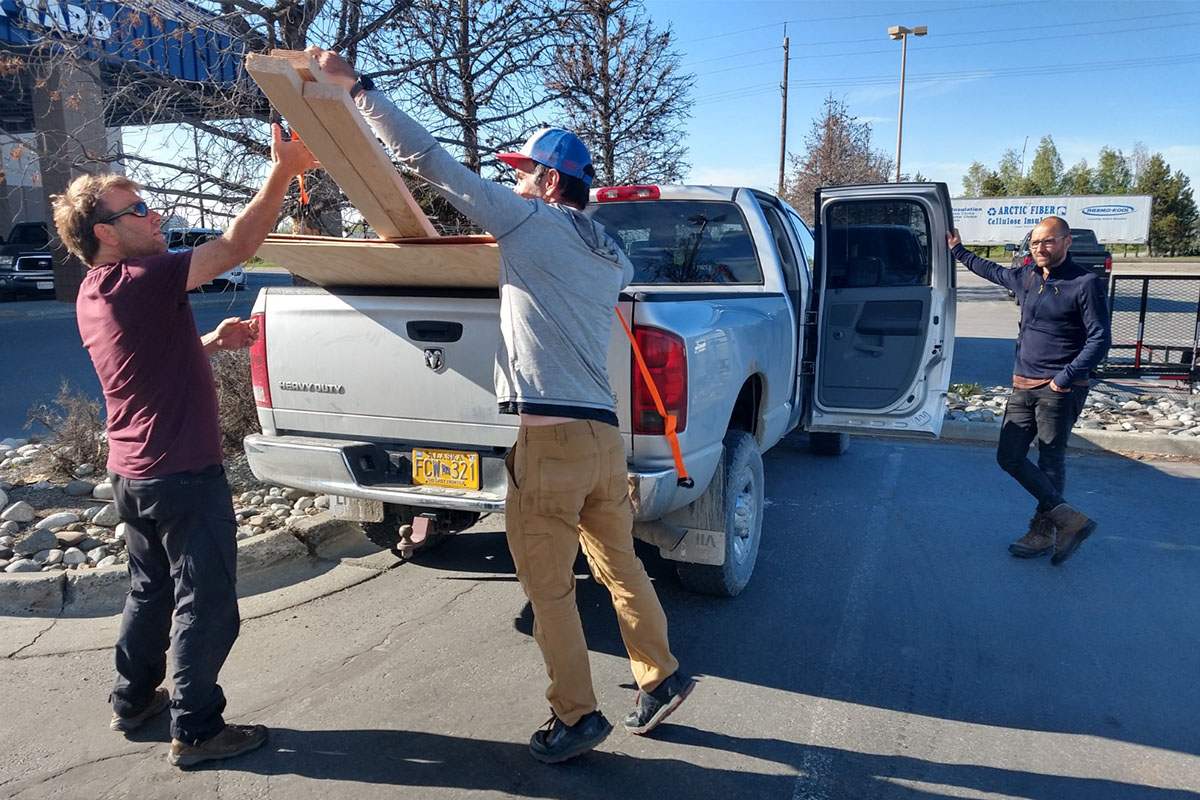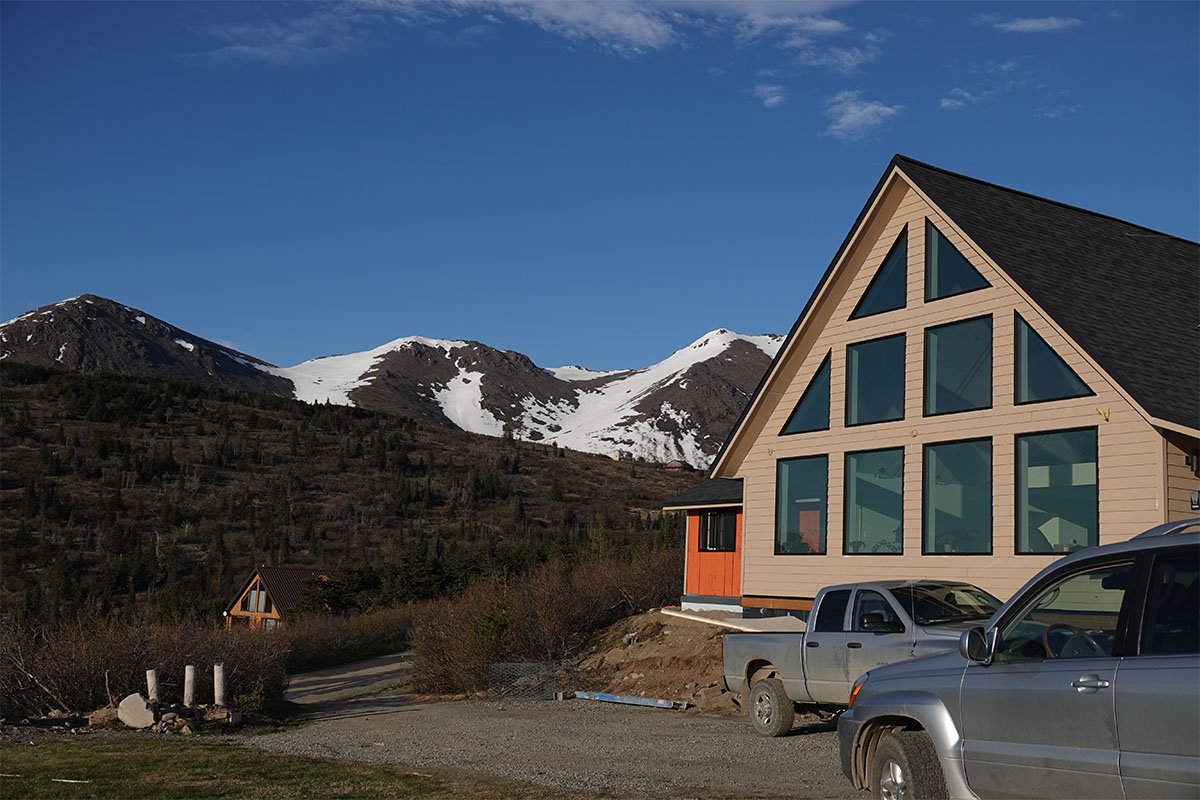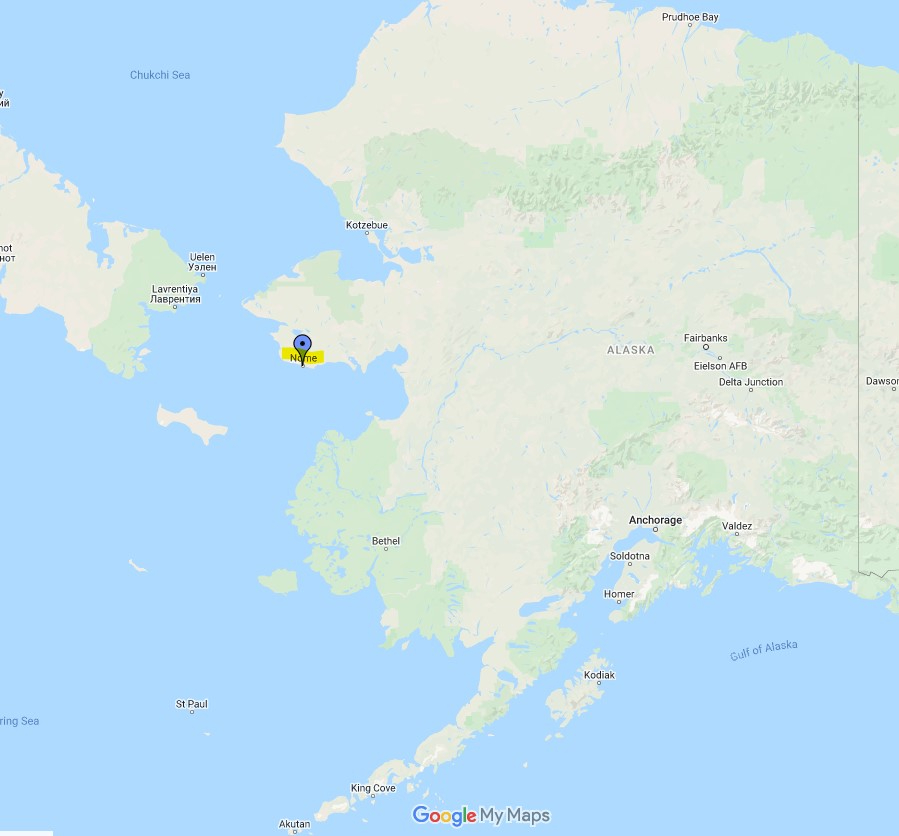Red knots breed in the Arctic region, where climate change is three times faster than elsewhere in the world. Not only is climate change more pronounced at these latitudes, also the breeding season for birds is much shorter, only two months, and it is therefore crucial for the migratory red knot, wintering at subtropical latitudes, to be at the right time at the right place. In the past, red knots arrived before the snow melted and laid their eggs on scarce snow-free patches, to perfectly time the hatching of the eggs with the time of emerging insects from the soil (food peak) after the snow has melted. Nowadays, with earlier snow melts, red knots are troubled to arrive at the right time at their breeding grounds and their chicks might hatch later than the time of emerging insects from the soil (phenological mismatch). Questions on date upon arrival at the breeding grounds and growth and survival of the chicks were risen. Already in 2016, van Gils et al. published in Science that the red knot became 20% smaller in comparison to 30 years ago and suggested that this might due to the phenological mismatch they experienced as a chick induced by climate change. Therefore, in this expedition we will focus on measuring the diet and the effect of (limited) diet due to the mismatch with the food peak in red knot chicks. A big adventure lies ahead of us!
~~ all blogs by Clazina Kwakernaak, scroll down for earlier posts ~~
Last days of the expedition!
After some intense weeks, without an update in the blog, the expedition ‘suddenly’ is almost over!
In between the busy parenting schedule, we conducted successful foraging trails with increasing chick age, four different food densities, and two different prey items: black soldier fly (BSF) larvae and mealworms (the latter which was more appreciated than the BSF larvae). With this experiment, we expect to find increased prey encounter rates and shorter handling time (time between picking up and ingesting the prey) with increasing age of the chicks. Due to the mealworms, we can additionally measure a size effect in the foraging trials. Since mealworms are bigger than BFS larvae, we expect a higher encounter rate but a longer handling time. With these successful trials we are ready to go home!
Meanwhile at camp, there are also experimental trials being conducted, only there with Tipulidae (crane flies; the preferred food of the knot chicks), to measure their movement in relation to temperature and wind. Furthermore, the team is still following the few remaining broods which are almost fledging. Unfortunately, there are only four broods left to follow, and we were surprised to see that one chick of the failed broods was adopted by a surfbird couple! We fear that the failed broods might be a consequence of the bad weather of the last days. With only three days left, we hope that the chicks will be fledged upon our departure. And so will we!
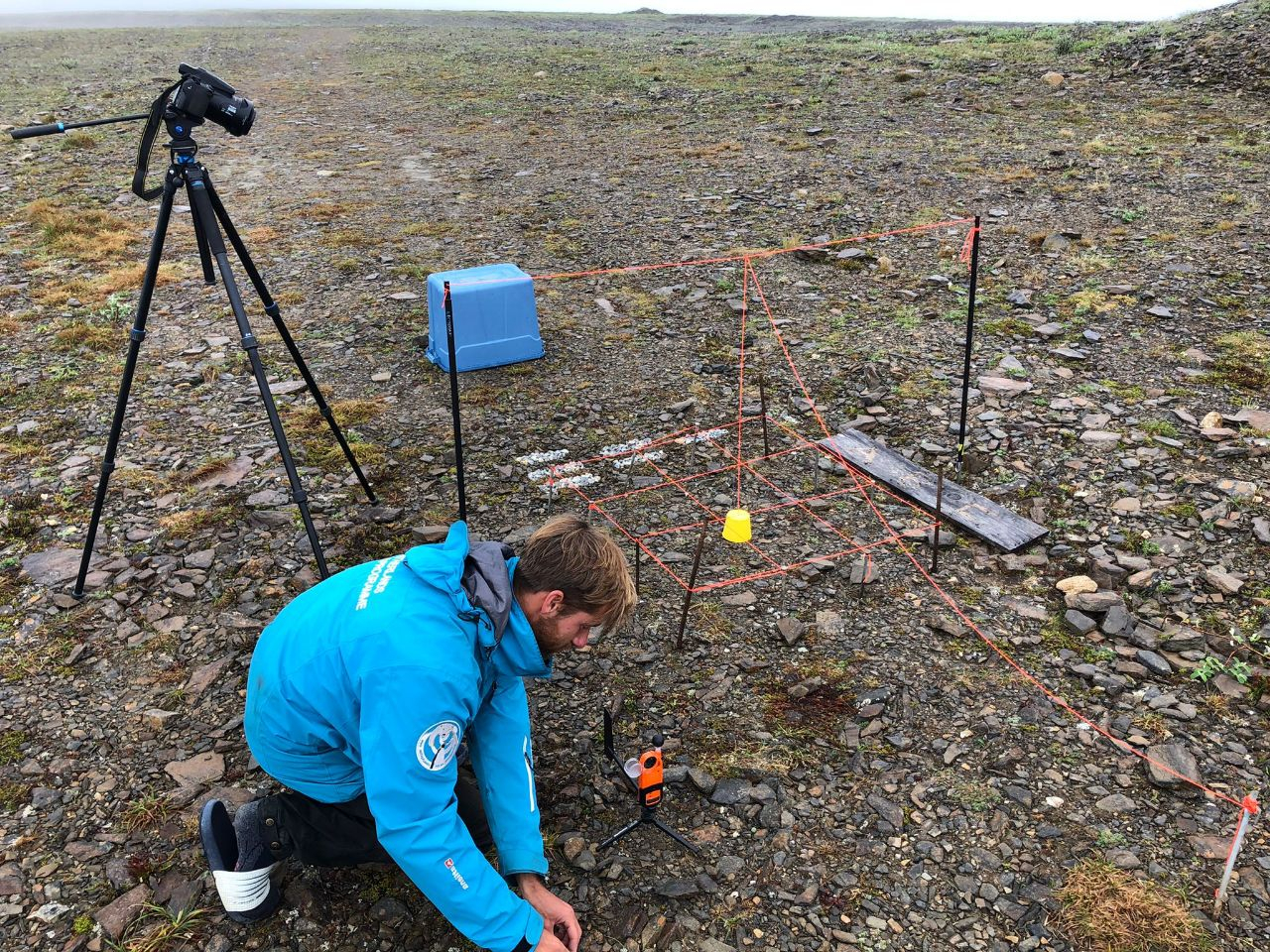
15th of June – 30th of June | Camp life and parenthood
The last couple of days we were forced to stay inside our tents because the weather was too bad to be out in the field searching for Knot broods. Also, the drone could not be flown in the strong wind and rain, thus we ceased the nest searching with the drone, not the least because most Knot nests (seem to) have hatched. Prior to the bad weather the team was very successful with the so-called “chick sweeps” to find broods, which entails walking systematically in a line while continuously playing the call of chicks to which Red Knot fathers instantly respond. In this way, we found 9 broods, most of them were 1-3 days old. While waiting for the rain to pass, meanwhile playing card games in the tent, our thoughts were with the survival of these broods! On a calm day between two storm episodes, we revisited an earlier “swept” area and clearly noticed the effect of the bad weather: brood sizes were clearly reduced in all previously encountered families, which is most likely the result of starvation due to the bad weather (chicks need to be brooded at the expense of foraging during periods of bad weather). An extra indication for the negative effect of rain and wind on the chicks is that they had grown significantly slower compared with the average chick growth collected in previous years. We fear that the rainy periods are part of climate change, with more frequent rain and storm predicted in the Arctic regions (on top of the other negative of Arctic warming which is the earlier emergence of insects by earlier snowmelt).
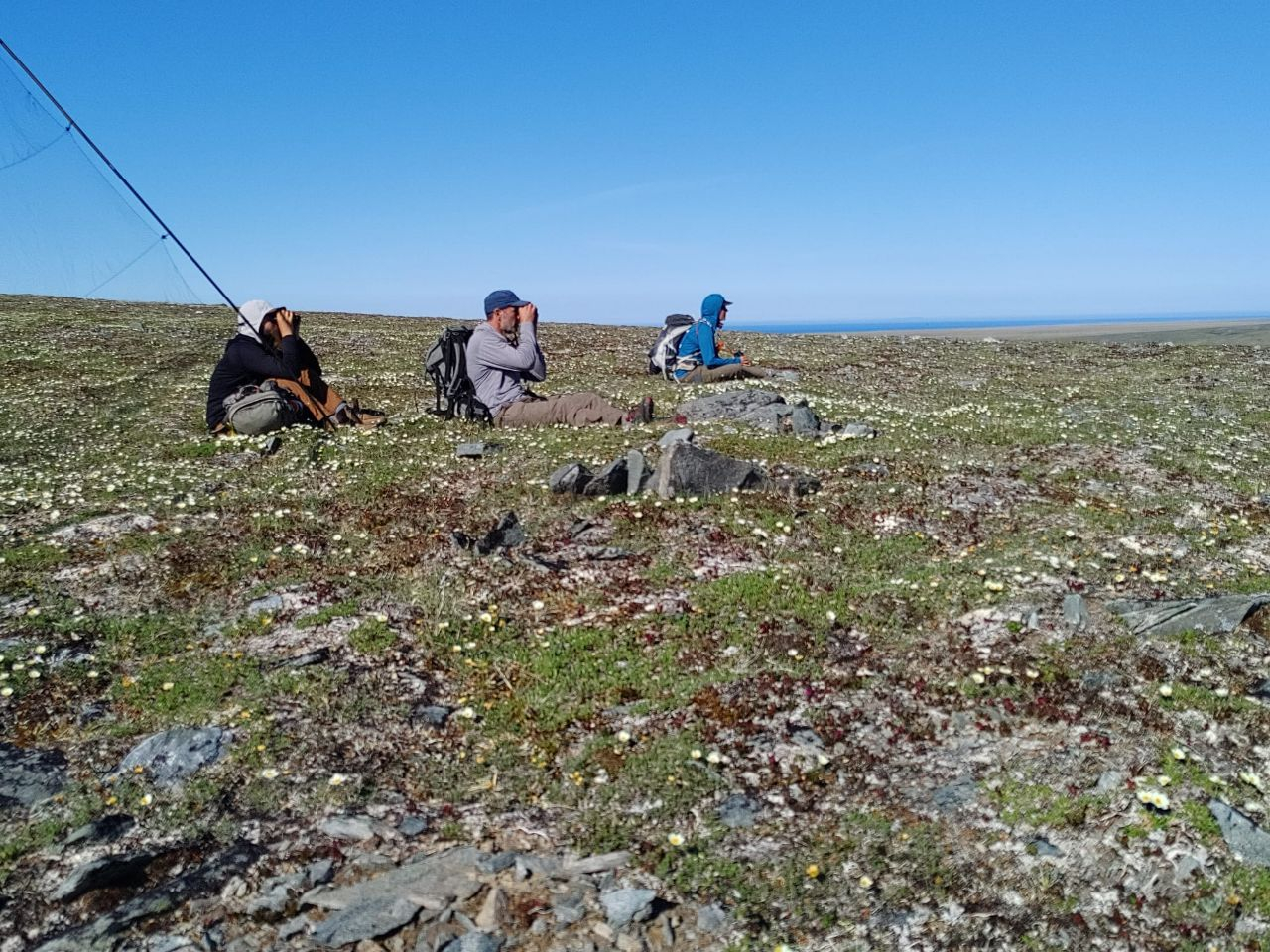
On the 23rd of June, just before the rain arrived, Jeroen and I luckily received four eggs for our experiment. The eggs were daily checked for the occurrence of cracks in their shells, which is the clearest sign for the eggs to be within a few days from hatching. For three days, Jeroen and I closely monitored the eggs in the incubator to make sure that the temperature and humidity were perfect for hatching eggs. This is very important, so we continued the egg monitoring also during the night by setting our alarm clocks in the night for two-hourly checks. You can probably imagine how happy we were to see the cracks develop. After their bill got through the first hole, the first two eggs hatched within 10 minutes right in front of our eyes and of those of Jim, Zak and Kelsi who were visiting one day to take care of stuff in Nome (and escape from sitting in a moist tent).
These were exciting times because the eggs were estimated to hatch on the 24th but finally all 4 hatched and looked healthy on the 26th! Nonetheless, more exciting times are to come! Now the chicks need to identify and eat the prey that we provide them with. We will feed them black soldier fly larvae, which we receive by weekly shipments from San Francisco by plane. So far, the chicks are doing very well. They still spend a lot of time underneath the heat panel to get the heat that they would naturally get from their caring father. Once every hour, or twice an hour, we take away the heat panel to stimulate the chicks to explore the arena’s and find their food. To our relief, this is going incredibly well. It is great fun to spend our time with these little chicks which already have their own characters and peculiarities. The chick named Feather first only ate larvae when we offered them with a pair of tweezers in front of its bill. It would only peck the prey from the tweezers but not when the larvae were crawling in front of its feet. Now, it has become less lazy and has learned that it should find food by itself, and it efficiently does so. Woolley is the most explorative type. He or she regularly takes the initiative to get away from the heat panel by itself and starts exploring the artificial tundra that we provide it with. While walking around it pecks at everything and seems to try out whether things are edible. Luckily, it clearly responds to the larvae and is font of eating them. These larvae will be on their chick’s menu for the next few weeks, so they better appreciate them!
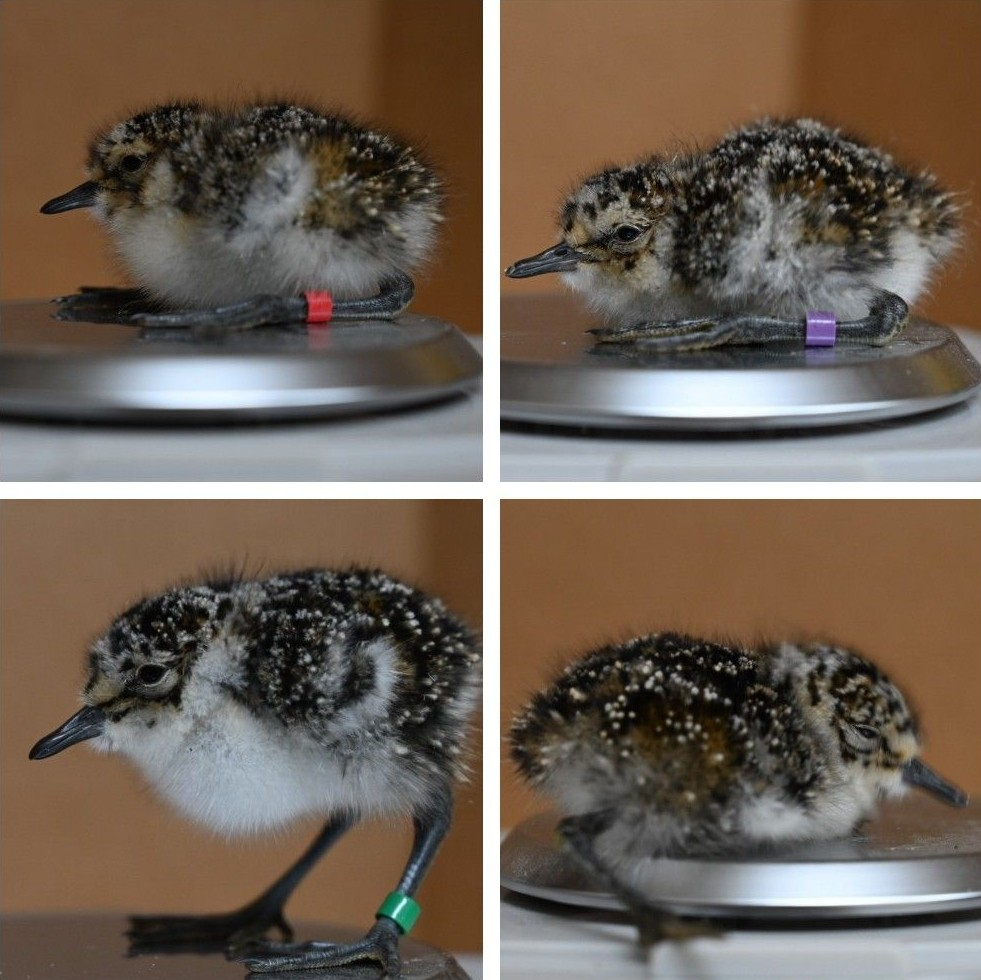
Tuesday 14 June | Back to N(h)ome!
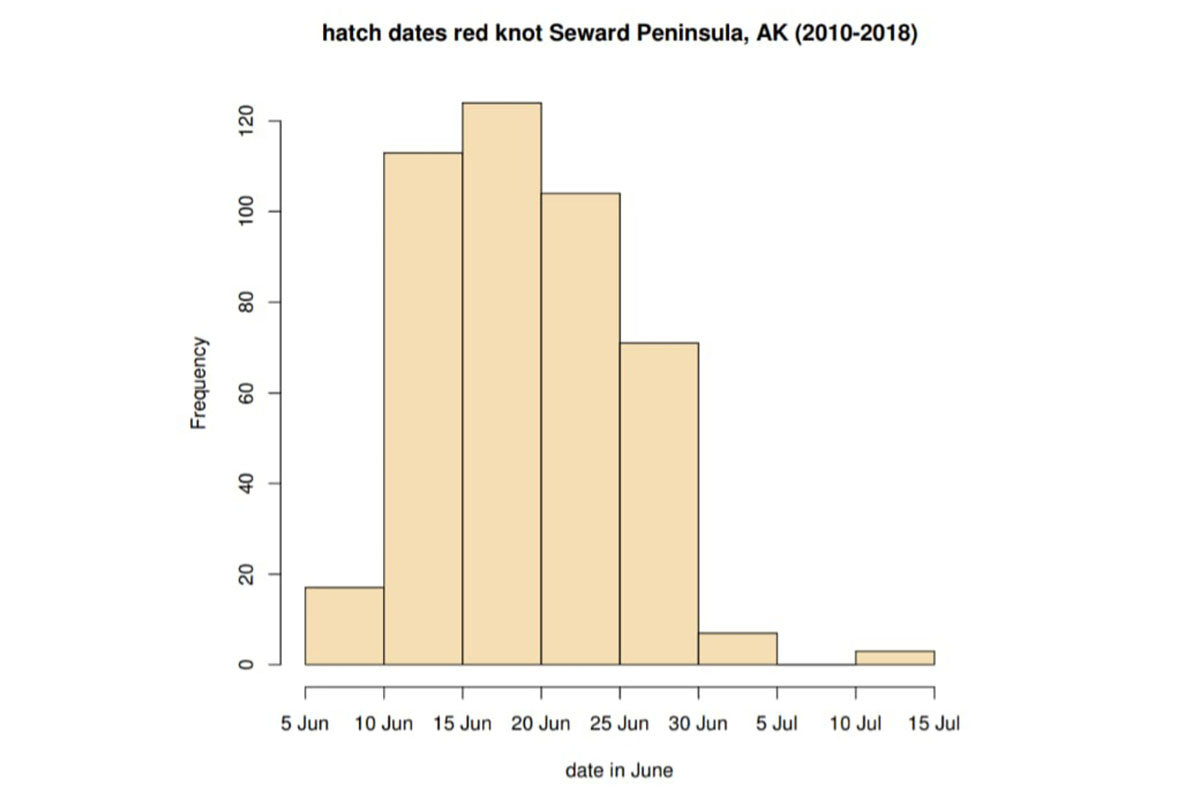
According to hatching data from the previous years, 15th of June would be the peak date of hatching chicks! Therefore, Jeroen and I went back to Nome to prepare everything for the foraging experiment and to be able to care for the -soon-to-arrive eggs or chicks. With the arrival of Jim Johnson (red knot researcher) at camp, it was time to perform the daily “chick sweeps”, next to tracking the radio-tagged birds and droning. During the ‘chick sweep’ method, the team walks on a line, and one will be playing the begging chick sound, trying to lure the male, allowing to rest of the team find the chicks and catch them. (NB prior to hatching, the female migrates to the wintering area (Mexico) thereby leaving the male to take care of the chicks.)
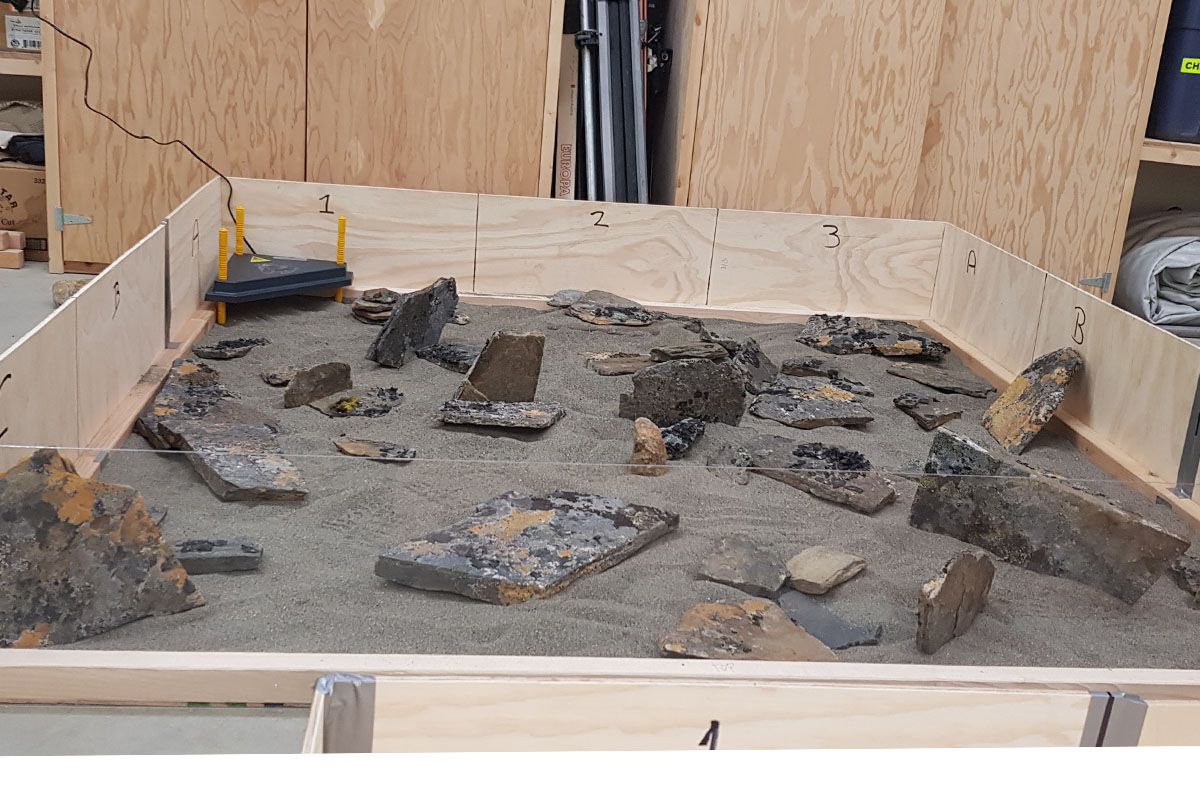
Tuesday 7 of June | Off the grid
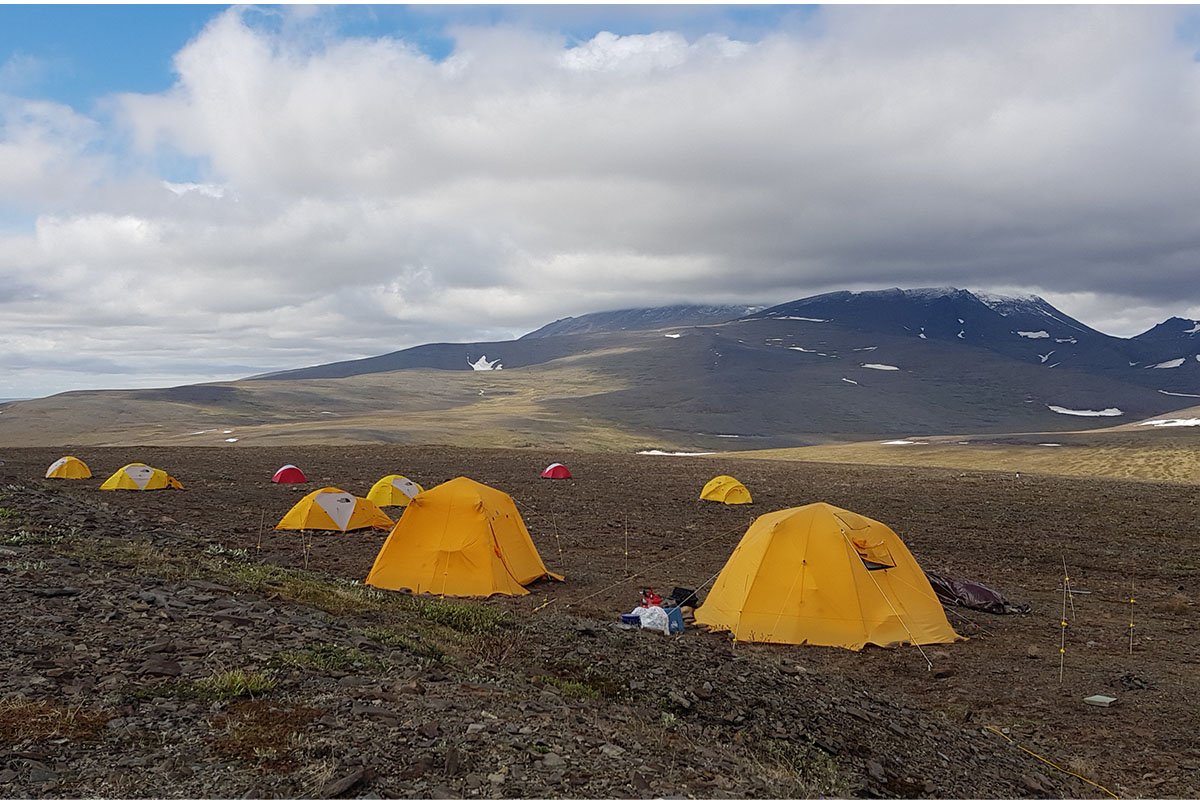
Upon the arrival of Zak Pohlen (wildlife biologist) and Kelsi Hunt (research associate), it was time to set up camp at 34 miles! From now, we wake up surrounded by singing red knots in the middle of our study area. Because we were running out of methods to catch male red knots (since they didn’t respond to the sound of the singing male sound anymore) we discovered that some males already respond to the sound of begging chicks. The sound of the begging chick is usually used to catch the male when he already has chicks. Since we needed the nest prior to hatching, we used the begging chick sound and decoy chick instead of the singing male and decoy adult to catch males and after 2 weeks we finally managed to catch 5 males in total and deployed them with a radio tag.
Unfortunately, when tracking the radio-tagged birds we found out that these birds were rather late, and the eggs would hatch too late to be useful for the foraging experiment.
Moreover, over time it became silently clear that we saw less and less red knots, meaning that the incubation period had already started and that observing pairs to find nests wouldn’t work anymore. Therefore, we rely on the drone to detect nest for us! Because our methods are quite time consuming, we needed an extra hand to fly the drone, and luckily Simon Spriensma (drone pilot) was more than happy to join to help us out! With some finetuning of the fly and detection software, Simon is eager to find us some nests!
Detecting a red knot brood with the infra-red drone. Movie: Simon Spriensma.
Tuesday 7 June 2022 | First nest
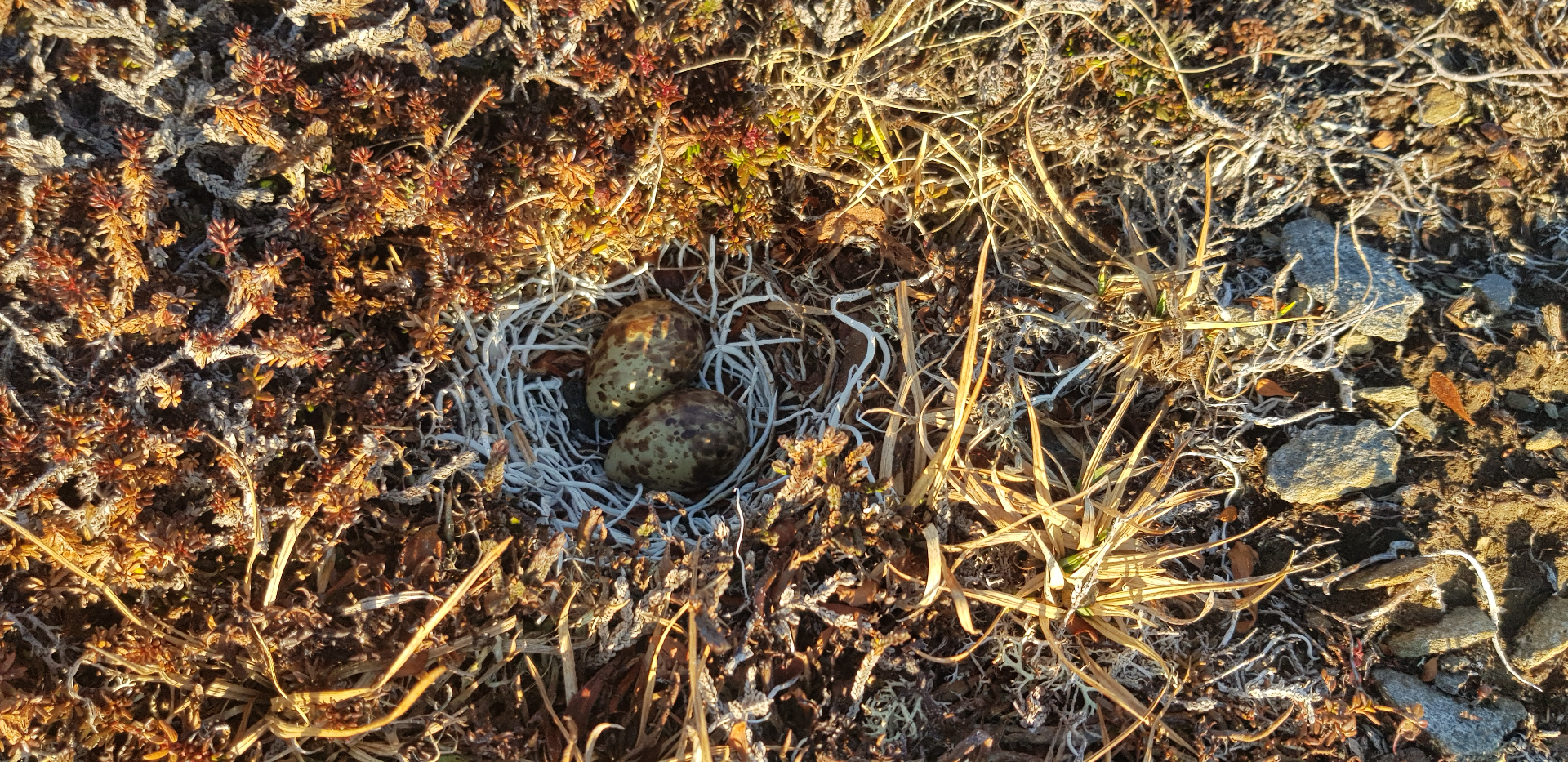
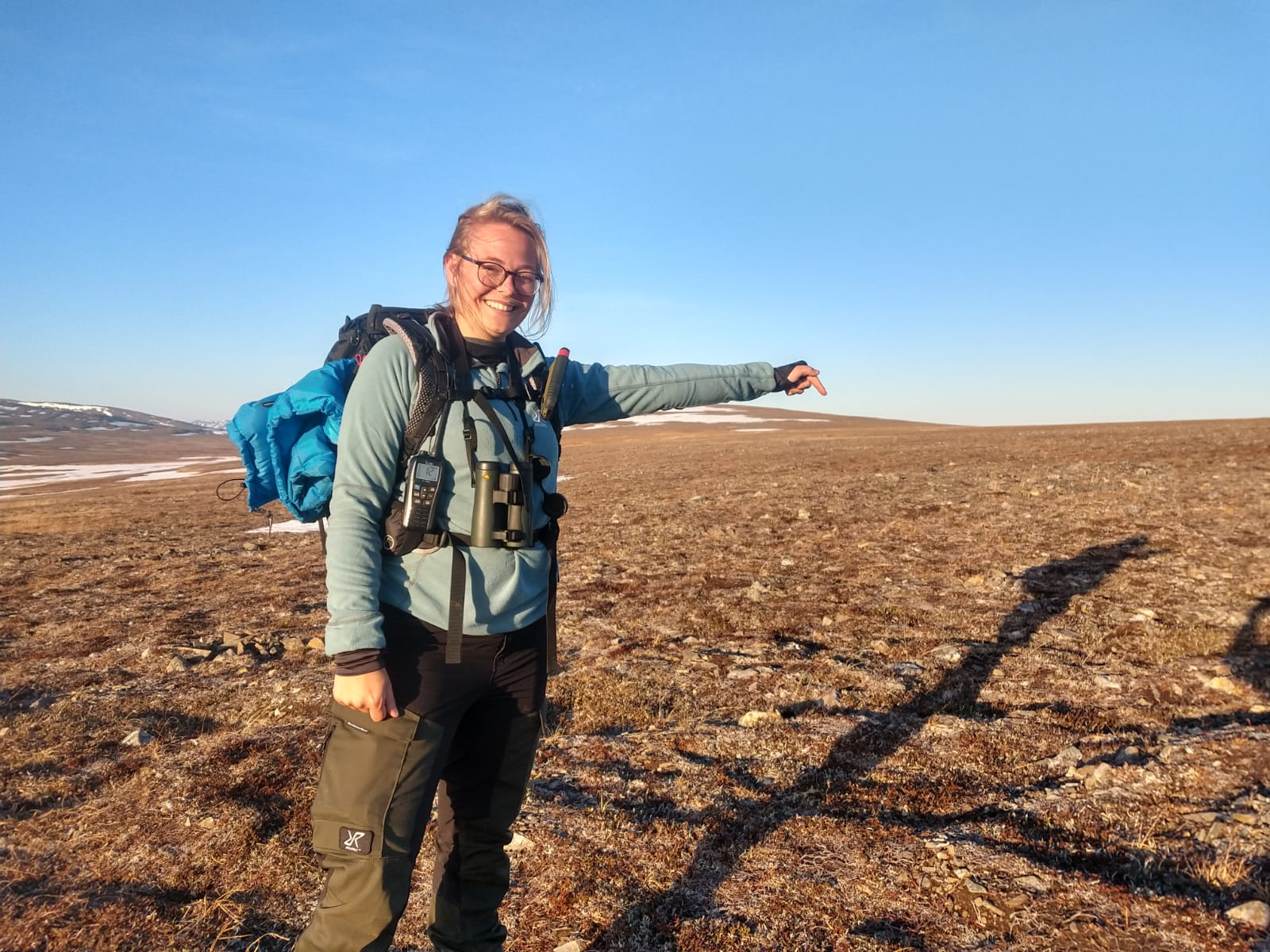
Sunday 5 June 2022 | You can’t always catch what you want
But we tried so hard, to find, and got what we almost needed.
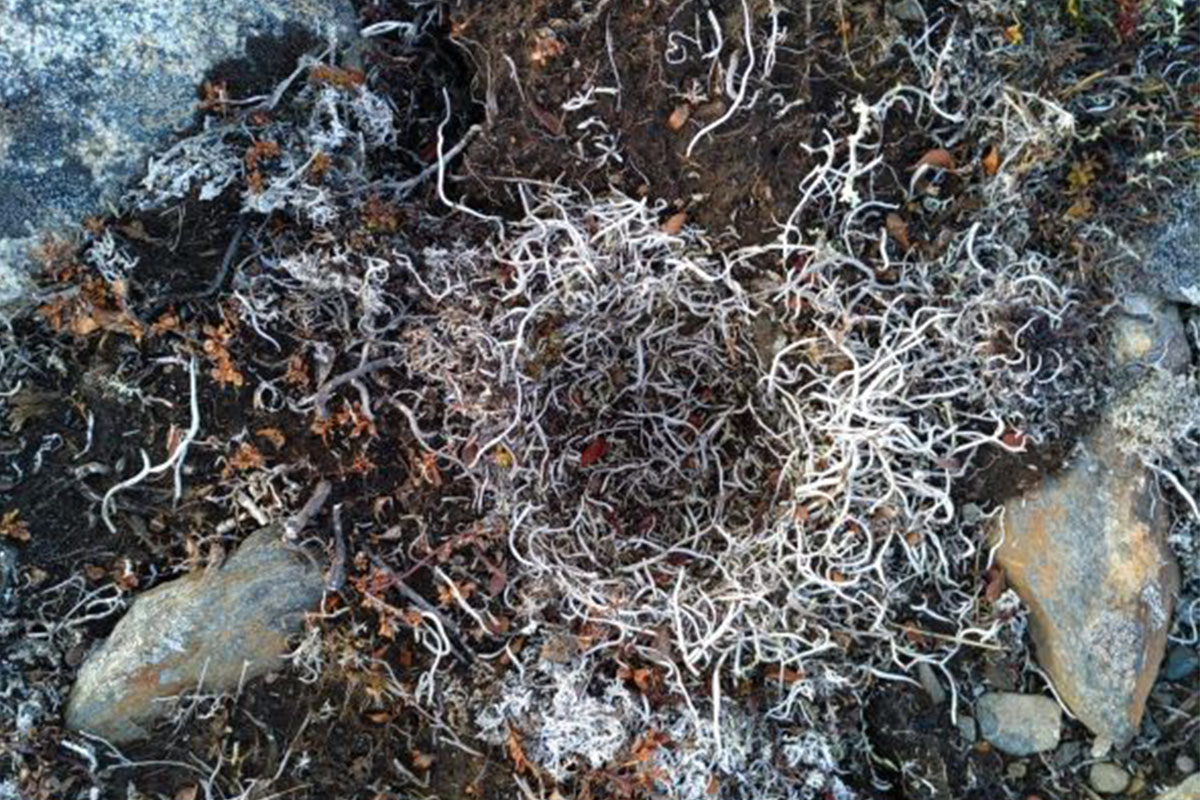
The last few days, we worked hard to catch males using the so-called “sound-and-decoy method”. In total we were able to catch three males and deployed them with a radio tag! Unfortunately, the window of opportunity to catch males before the egg laying phase is now over. Ideally, we would have caught at least four males which would give us 4 nests to take 2 eggs from for the chick foraging experiment later in the season. Therefore, we switched towards the so-called “observation method”, in which we observed paired knots hopefully leading us to their nest. Both Jeroen and I found a copulating pair but weren’t yet successful to find the nest. Nonetheless, we found a lot of scrapes (nest building) which we mapped and will check periodically. These scrapes only lead ~5% of the time to a nest. Because the summer progresses rapidly and the snow melts fast, we need to act fast on the behaviour of the birds and soon we will use the drone to find nests during the incubation period.
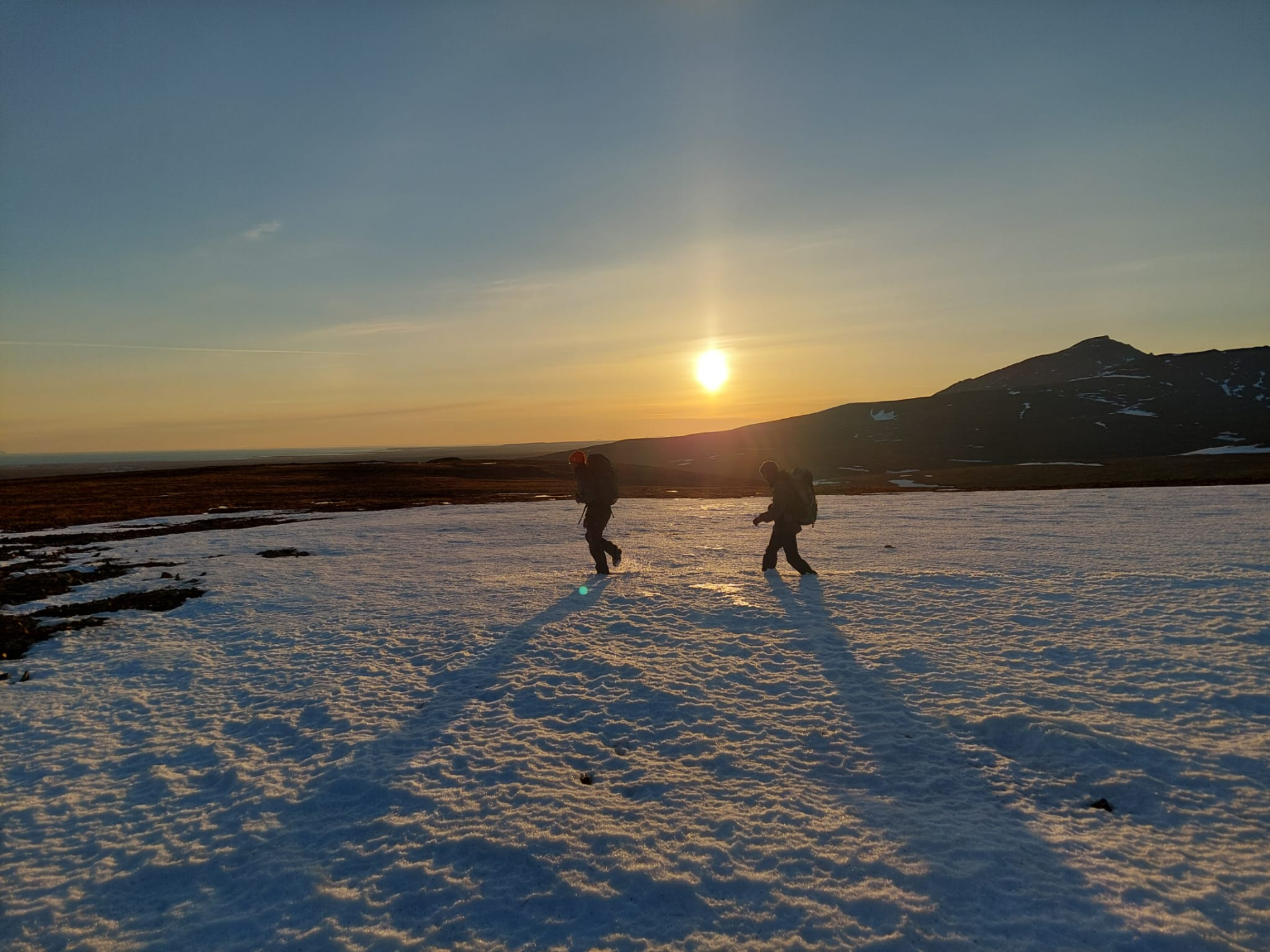
Tuesday 1 of June | June fools
The past couple of days, we tried to map territories of singing male knots, with the aim to catch these birds and give them a radio-tag (which later enables us to find their nest). While doing so and wandering around on my own, I saw an American golden plover and my first thought was, does it have a broken wing? But it fooled me, it was the broken wing display, which is typically to lure “people” away from the nest.
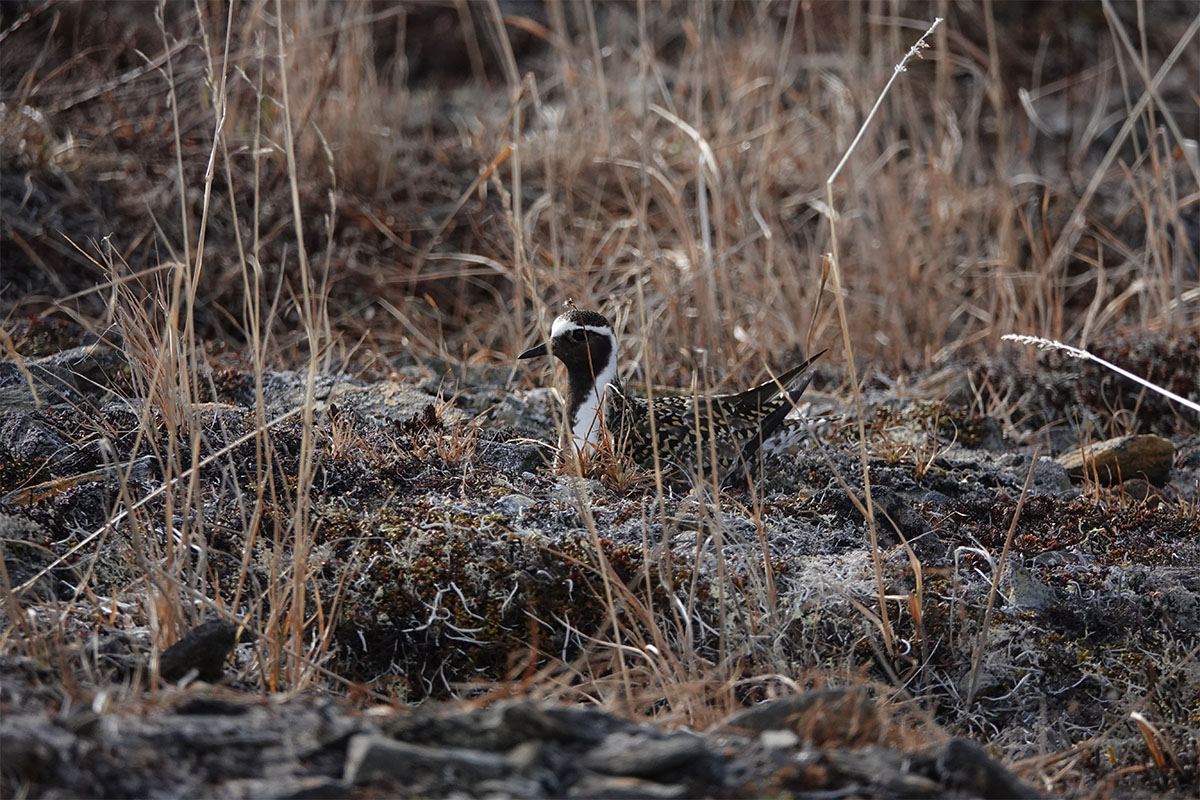
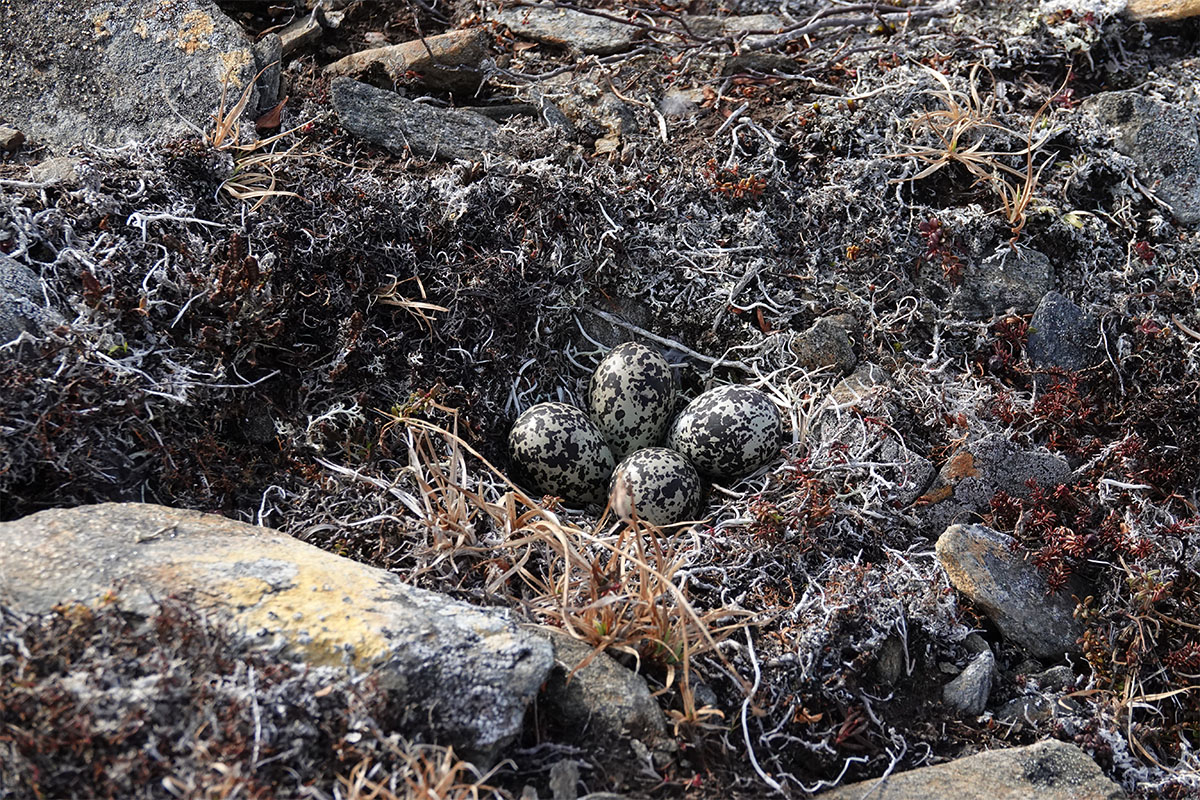
Nevertheless, we found the nest - the first nest of the season! Although it was not a red knot nest, we nevertheless could use it to calibrate the infra-red drone! Flying to the nest with the drone, the bird flew away and we could detect warm eggs. Red knots may behave differently and will most likely stay on the nest. It will still be challenging, but at the same time it looks promising!
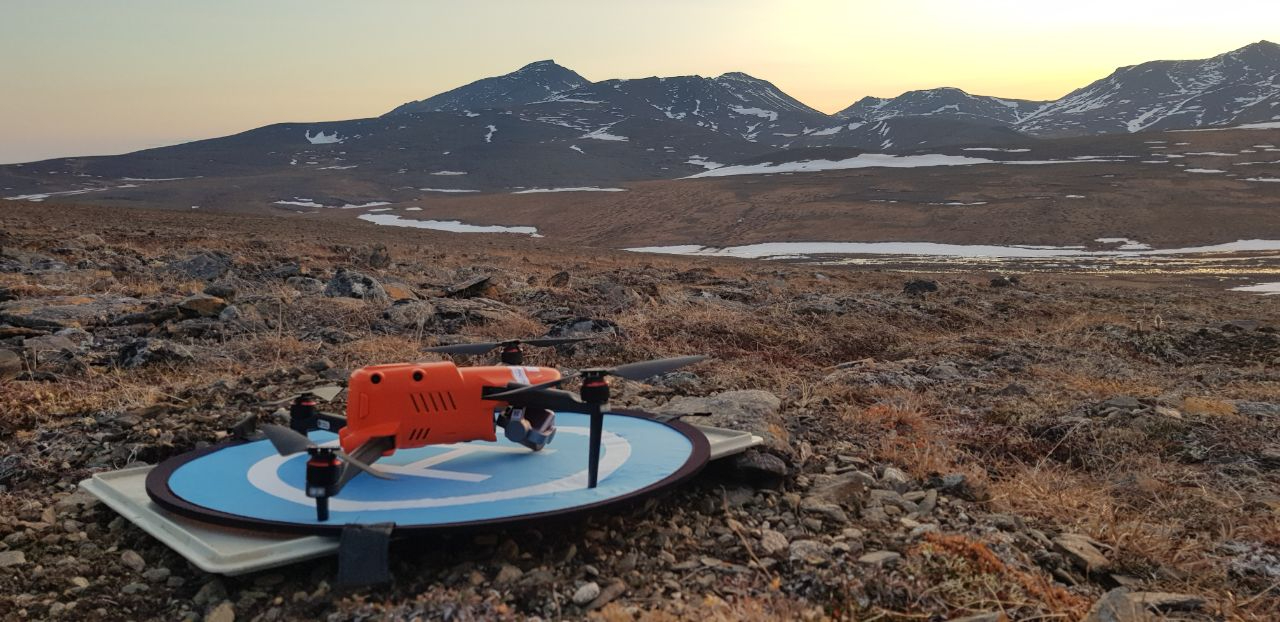
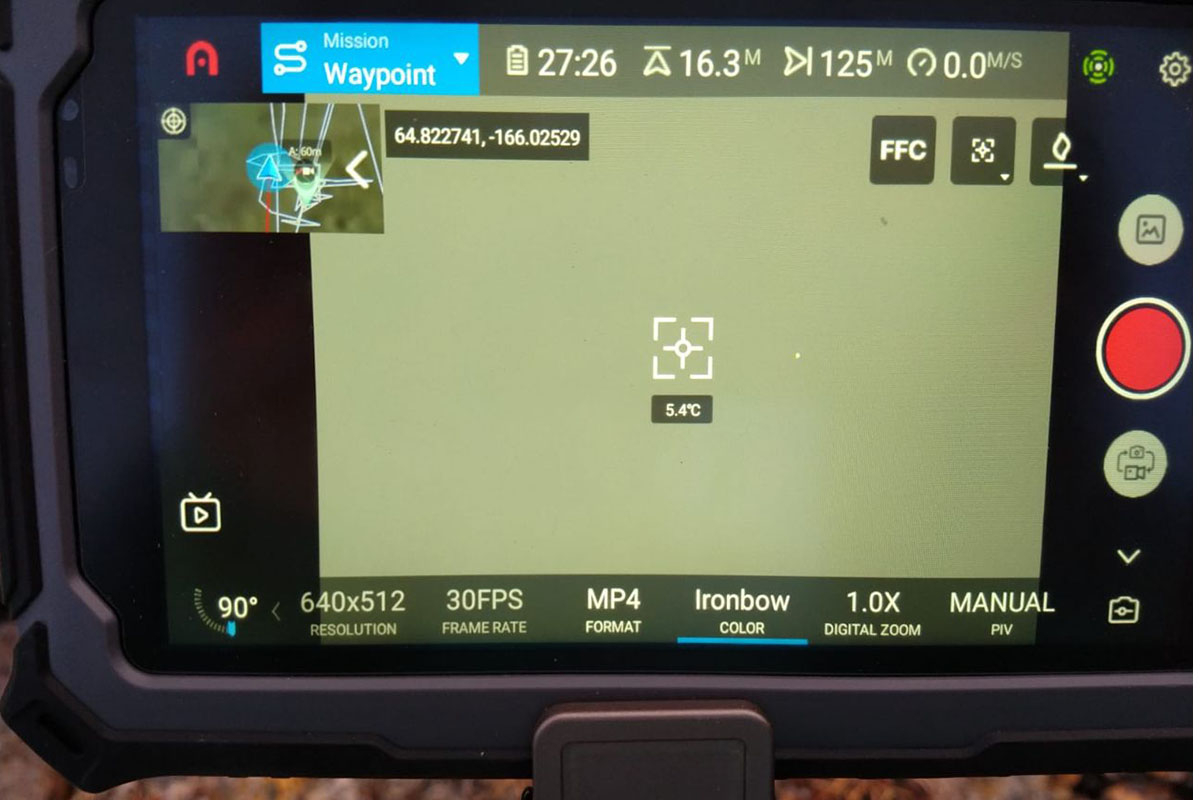
Friday 27 May 2022 | Time to catch them all
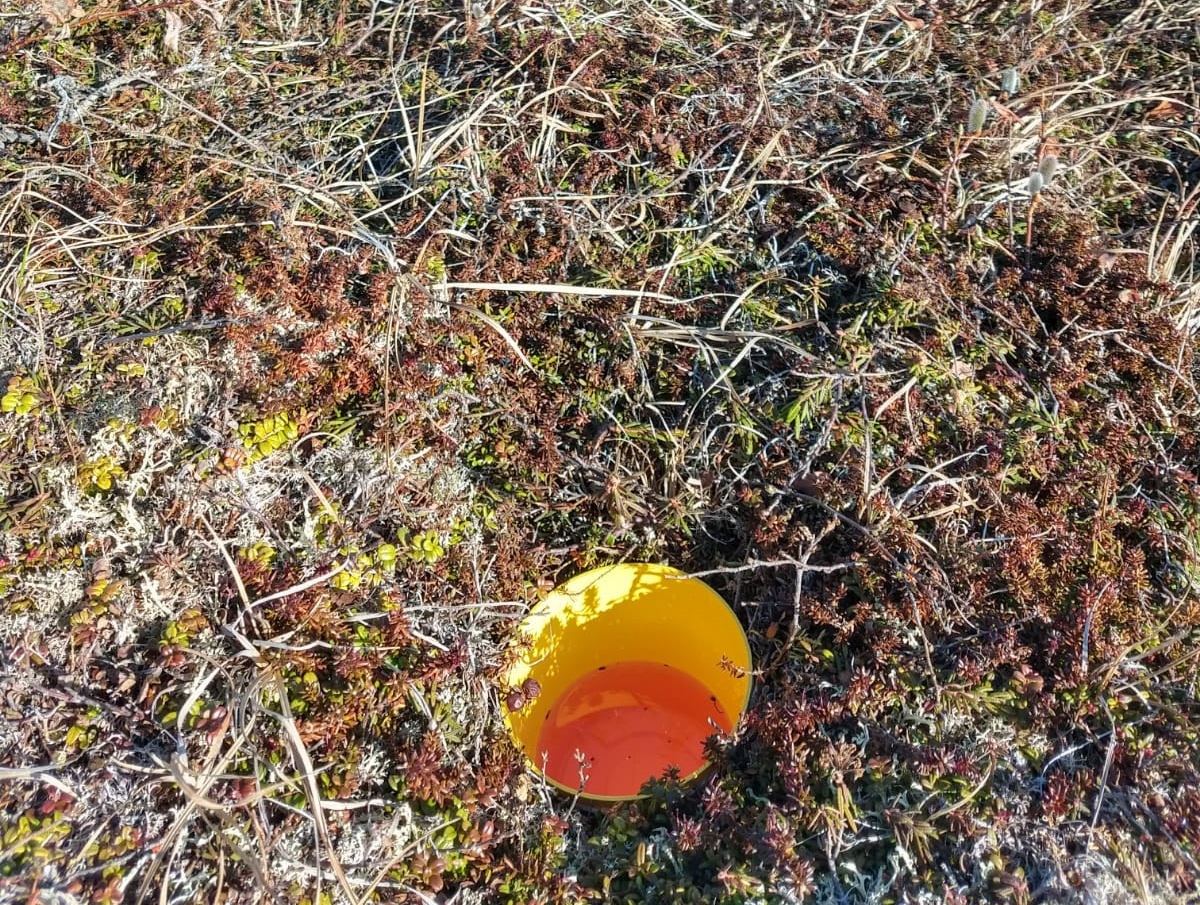
The past few days were catching days! Together with placing pitfalls, traps in the ground to catch insects, we walked around the study area in search of more red knots. Since there is still a lot of snow, we were not yet able to place all the pitfalls at locations set-up in 2016. In order to catch a red knot, we searched for singing males, females do not sing. The woosh net was set up after we found a male and placed a 3D printed red knot together with a MP3 repeating the song of the red knot in front of the net. Usually, the song of the red knot attracts a male which is looking for the intruder of his territory. Sometimes males are shy, and it takes a lot of time before it comes close to the decoy, whereas others already inspect the decoy after three minutes!
Catching a male red knot with a woosh net. Video: Clazina Kwakernaak
When the male came close to the decoy, Jeroen triggered the woosh net, trapping the red knot. After a male was caught, it was ringed, measured and a radio tag was glued to its back. The radio tag is important for finding the bird back later when it settles with a female and starts to breed. This is a novel method for finding nests enabling us to catch as much as possible.
Releasing the male after measuring with a radio tag. Video: Clazina Kwakernaak
Monday 23 May 2022 | Arrival in Nome
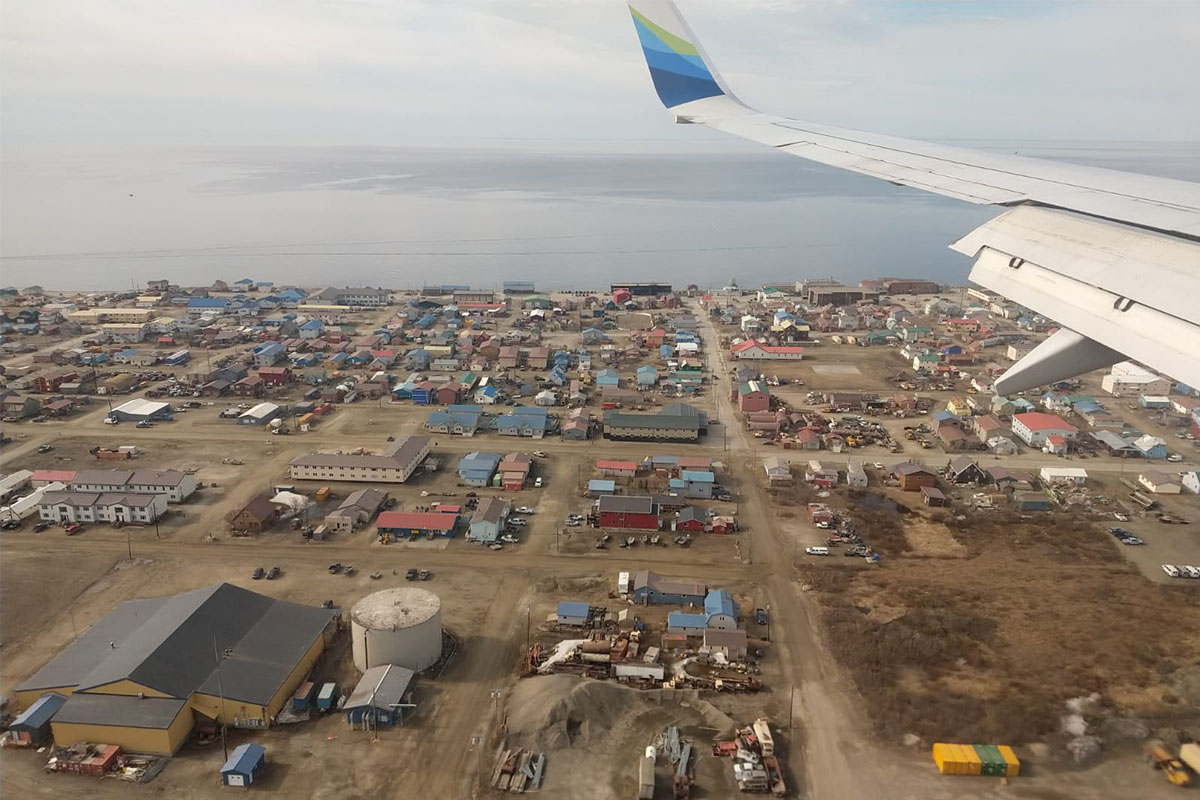
At 8:00 AM, we took off to Nome, our destination! Upon arrival, we first dropped off all our stuff at the apartment where the chick experiment will take place. It was finally time to check out our study areas 34 miles and 37 miles to see how the snow coverage would be. During the ride, we already saw typical breeding birds of the area but no red knot yet.
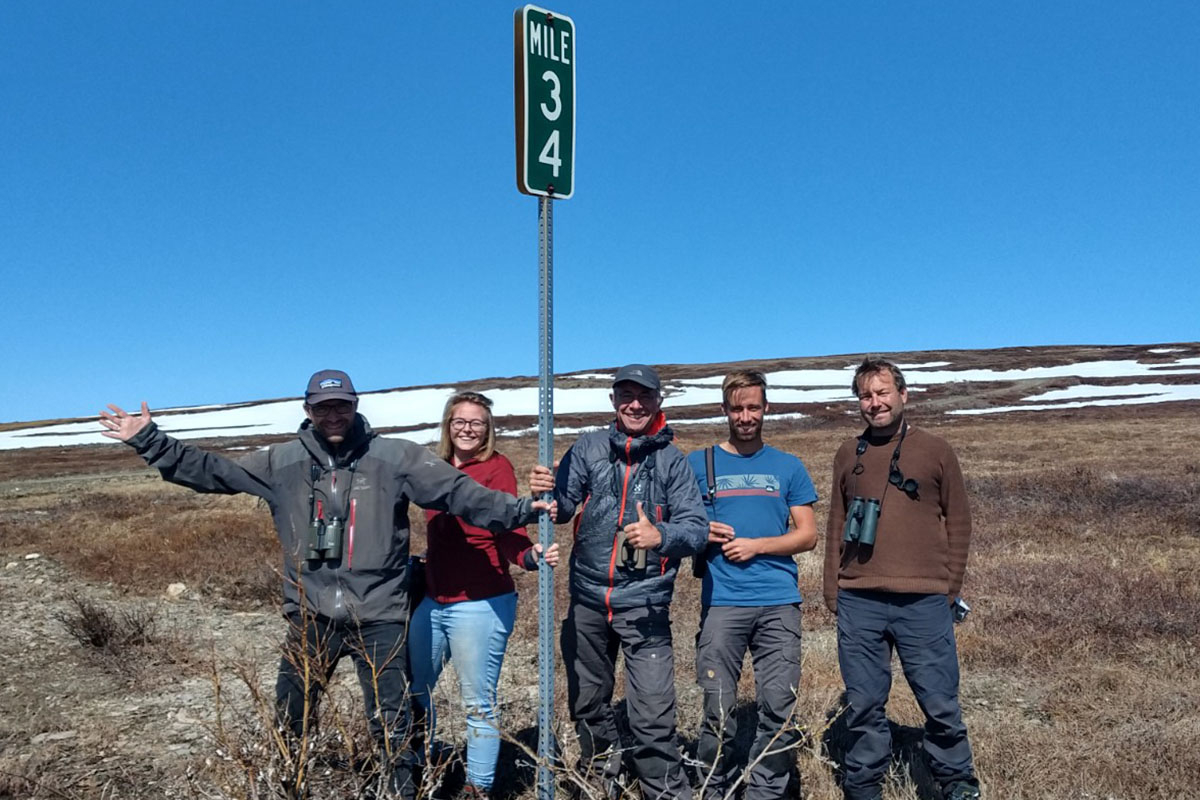

Arriving at 34 miles, we walked towards the place where we were planning to set-up camp and concluded that it still too wet and too much snow for probably another 10 days. Nevertheless, we had a beautiful walk with our eyes and ears open hoping to spot a red knot around the study areas! And indeed, Job spotted our first red knot, and Jim spotted three, opening our fieldwork season!
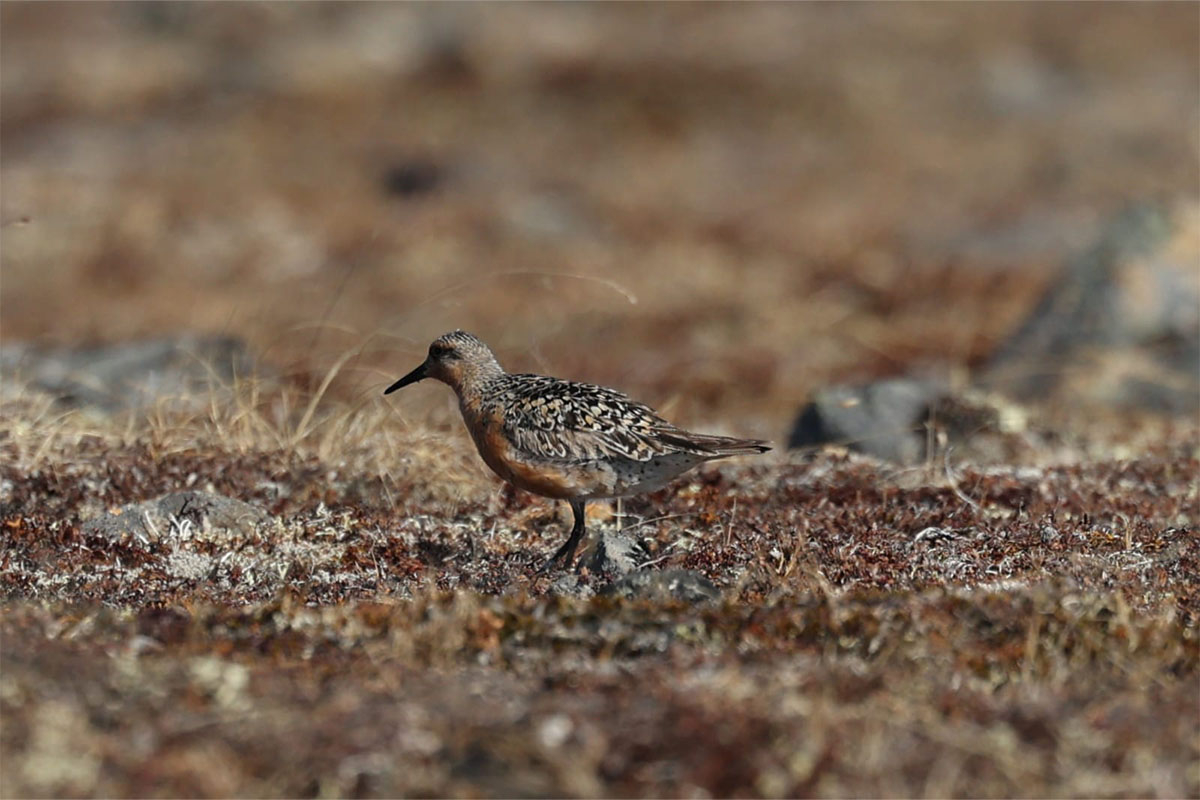
Sunday, 22 May 2022 | Preparation day
After a well-deserved night of sleep, it is time to prepare everything for when we leave to our destination Nome!
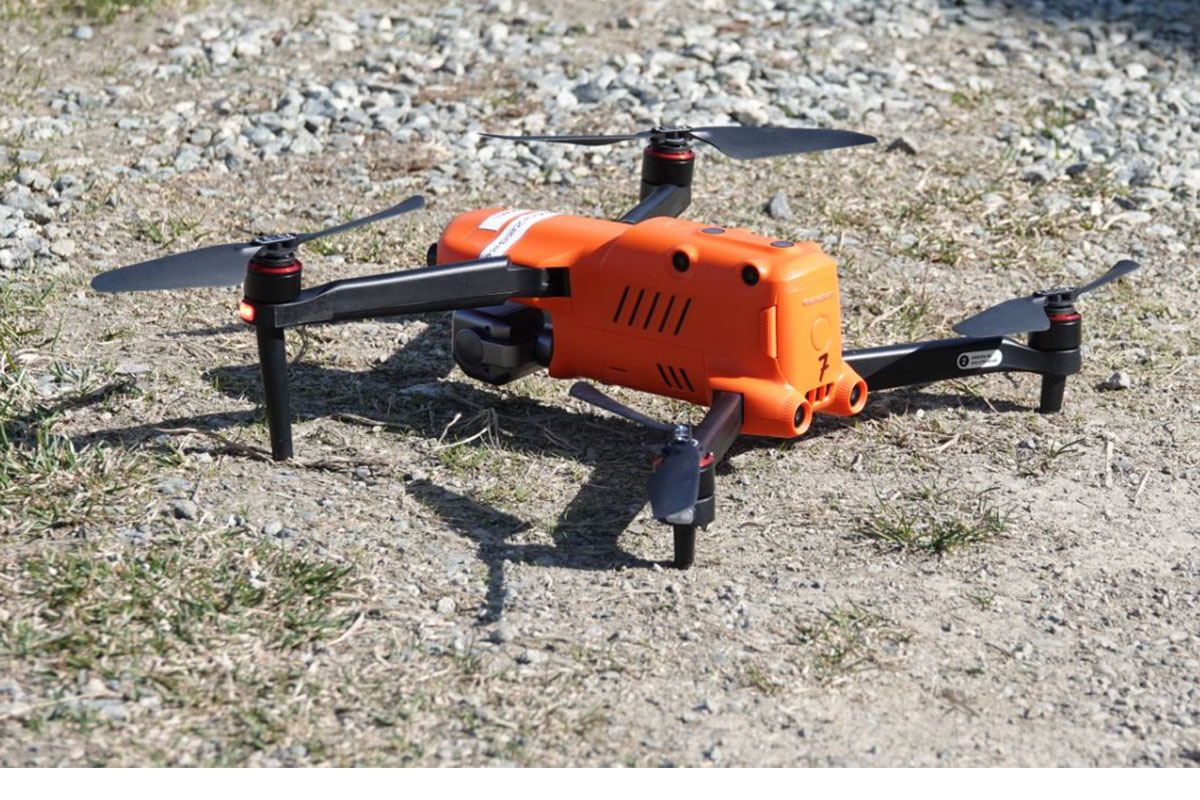
We took our infra-red drone for a test-flight since we were still in an area with proper network reception. The use of infra-red drones to detect nests is becoming increasingly popular and has been mostly used to detect meadow bird nest in early mornings. At that time, the difference is the highest between the ground temperature and body temperature of the meadow birds. However, in the absence of night-time, it is much harder to detect nests with the use of infra-red on the Arctic tundra. Therefore, our team are the first to try to detect red knot nests on the tundra with the use of an infra-red drone in combination with an additional RGB camera.
Test-flight of the drone. Video: Clazina Kwakernaak
Jan helping the drone to land at the controller Job and Tim. Video: Clazina Kwakernaak
Afterwards it was time to construct arenas (~4m2) from the wood which we had collected the day before. The arenas will function as a foraging area for an experiment with red knot chicks. In those foraging arenas, red knot chicks will randomly receive different densities of food at different ages to measure their intake rate and energy expenditure, measuring the functional response. The last and most important preparation of course was getting groceries!
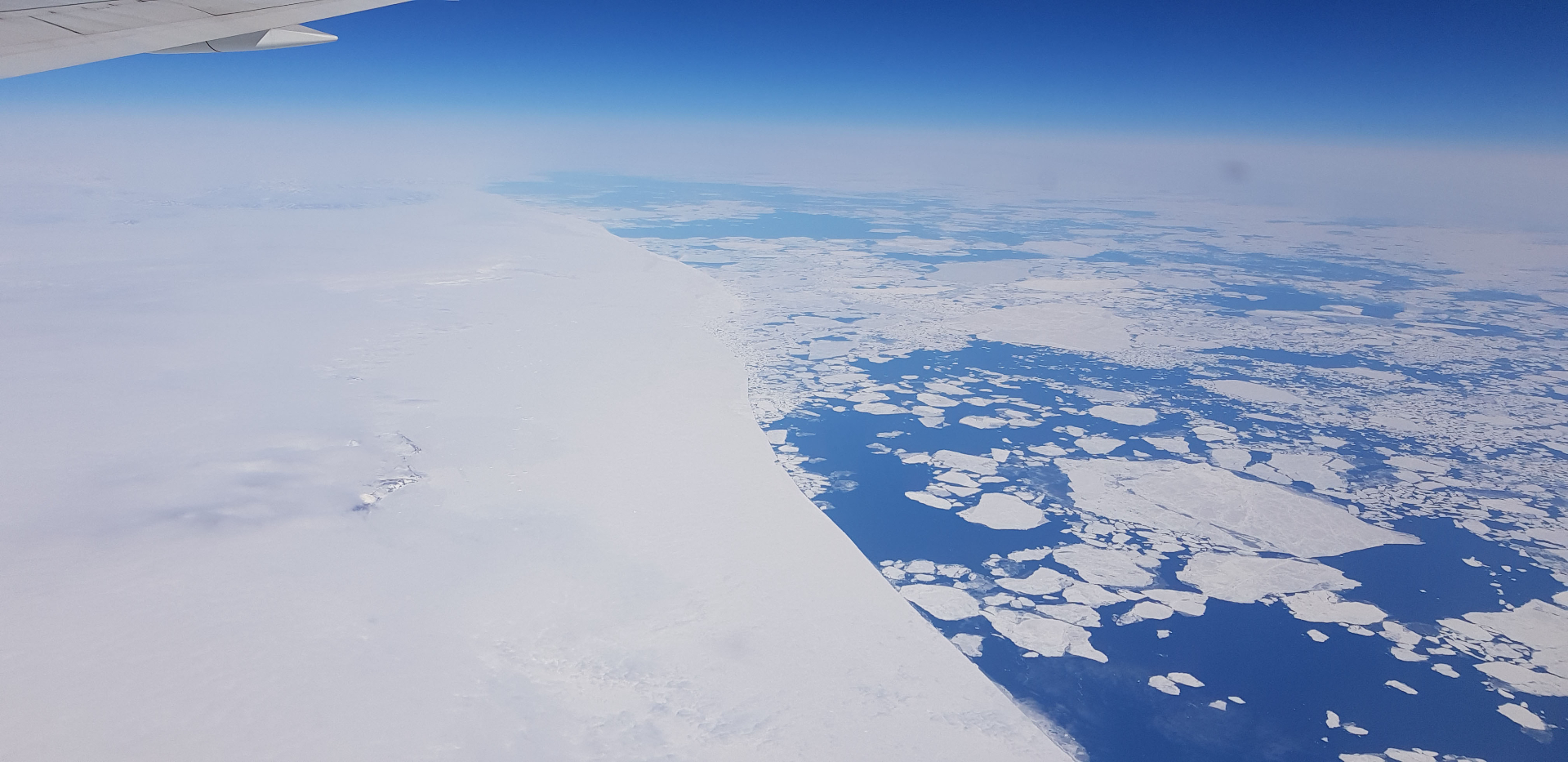
Saturday 21 May 2022 | Departure day
It is 5:00 AM, we are fully packed and ready to go to Schiphol to start our migration towards Anchorage. Everybody had a seat located at the window and it was totally worth it! We flew northward over Greenland and the view was stunning with the melting sea ice and just before Anchorage we passed the highest mountain of Northern America, Mount McKinley (6,190 m).
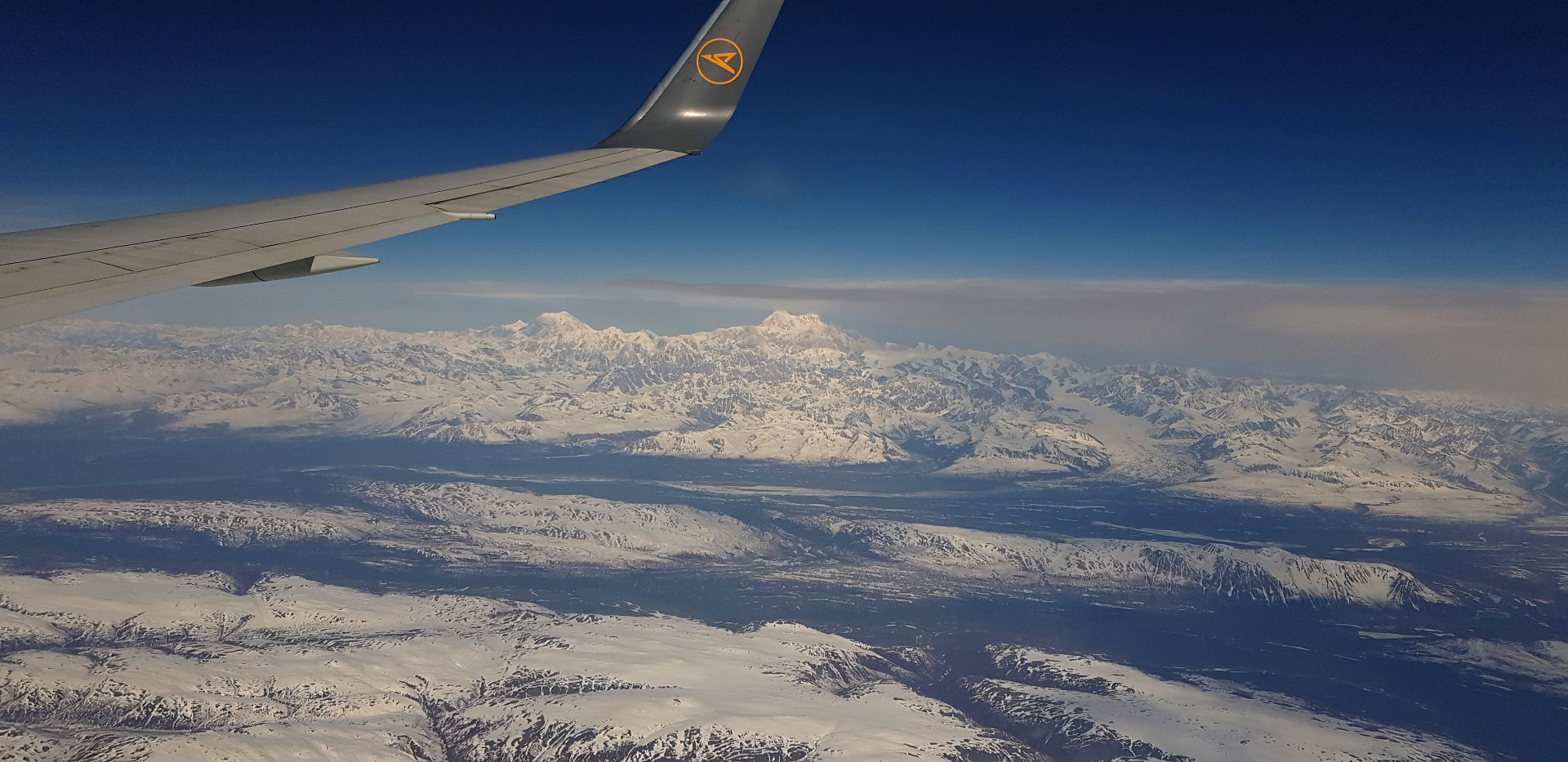
With quite some delay between the transfers we arrived at Anchorage, after 13 hours, around 1:15 PM local time. We were warmly welcomed by the red knot researcher and our host Jim Johnson, and by the famous Bald eagle, which was the first bird we saw! After dropping off our luggage, it was time to already do some shopping for the preparations for the next day. No rest for the researchers! However, it is not bad at all because in between the shopping we enjoyed the warm (± 14oC) and sunny weather! After the majority of the shopping was done, we met the lovely family of Jim Johnson, had a delicious dinner and after being awake for 26 hours it was finally time to sleep.
